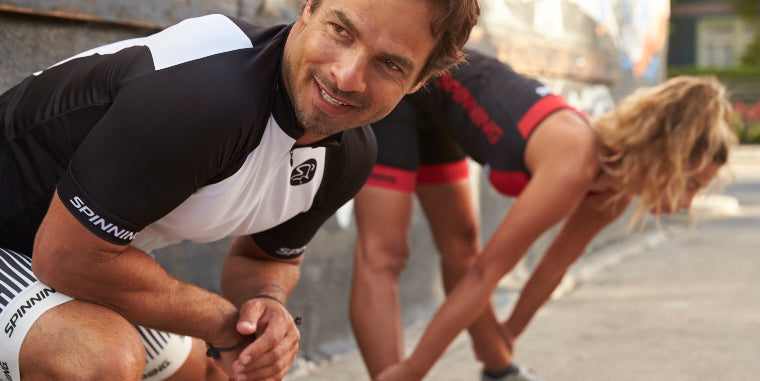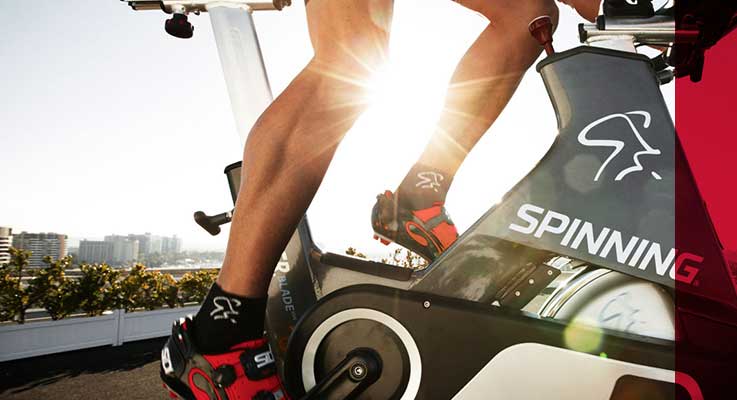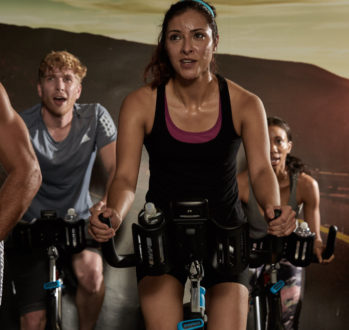Take our quiz now for 1 SPIN® CEC With every pedal stroke, a muscle hidden deep within your groin works to coordinate your movement. Although you cannot see it or even feel it externally, keeping this muscle strong, flexible, and healthy is critical to your physical health and fitness performance, particularly in the sport of cycling, and of course, in Spinning® classes.The psoas major originates at the lumbar vertebrae I-IV, wraps around the front of your pelvis, joins the iliacus muscle and attaches to the lesser trochanter of your femur. The muscles are sometimes referred to as the “iliopsoas” and are responsible for bringing your knees toward your torso or your torso toward your legs, depending on which is stationary. They’re also sometimes involved in external hip rotation.Prolonged periods of sitting—an everyday reality for people with office jobs or otherwise sedentary lifestyles—contribute to a shortened, weak psoas, inactive gluteal muscles, and a weak core. Spinning can help strengthen the psoas, but if you do not engage in deliberate psoas flexibility exercises, train opposing muscle groups, and ensure adequate rest and recovery you may be setting yourself up for overuse injuries.
Evaluating Psoas Health
Evaluate the flexibility of your psoas muscle by performing a modified Thomas Test. Lie on a bench or a mat with your spine in a neutral position and your legs extended. Bring one knee in toward your chest until your lower back flattens and your knee grazes your abdomen. Observe the straight leg carefully; it should remain extended with the back of the leg touching the bench or mat surface. If the straight leg lifts off the surface, just below the hip, you likely have a tight psoas muscle. If it bends at the knee, you may also have a tight rectus femoris, one of the four muscles of your quadriceps. If either of these occur, hip flexor stretches should be part of your regular training program.Strength and Flexibility Exercises
In addition to traditional active and static stretches, yoga and Pilates offer effective poses for stretching your psoas.Kneeling Psoas Stretch
This is the most common hip flexor stretch and works the psoas of the kneeling leg as you tuck your pelvis forward.- Kneel on the floor in a low lunge position with the front foot planted on the floor.
- Align your hips and ensure your spine is in a neutral position (do not arch your back).
- Lean forward into the front leg, extending the back leg slightly.
- Tuck your pelvis forward.
- Hold the position for 20 to 30 seconds.
- To deepen the stretch, reach the same arm overhead and twist slightly toward the opposite leg.
- Repeat on the other side.
Bent Knee Stretch on Roller
The bent knee stretch can be performed on the floor, but a foam roller allows you to deepen the stretch.- Lie on the floor on your back with a foam roller placed beneath your sacrum, perpendicular to your spine.
- Bring one knee in toward your chest, holding your leg with both hands and pulling gently.
- Keep the opposite leg extended during the stretch.
- Hold the position for 20 to 30 seconds.
- Repeat on the opposite side.
Kneeling Psoas Stretch with Leg Rotation
Because you live your life in all planes of motion, flexibility and strength training should recruit your muscles from a variety of angles.- Begin by kneeling in a low lunge position, as described in the basic Kneeling Psoas Stretch.
- Bring your back foot toward the opposite side of your body so that your calf forms a diagonal line.
- Lean forward and tuck your pelvis forward.
- To deepen the stretch slightly, reach your arms forward and turn you palms upward, then point your fingers toward the floor.
Prone Back Extension
This simple Pilates exercise strengthens the spinal extensor muscles and hip extensors, which provide balance for strong psoas muscle. It is an especially important exercise for cyclists, runners, and those who engage in a significant number of abdominal exercises.- Lie on the floor on your stomach with your arms extended toward your feet, pressing against your thighs.
- Press your legs together as you elevate your head, neck, chest, and shoulders off the floor.
- Exhale as you lift and articulate each vertebra arching your back and providing support with the abdominal muscles.
- Inhale while lowering your upper body toward the floor.
- Repeat the move 10 times.
Pigeon Pose
Pigeon pose is one of the most effective yoga exercises for the health of your psoas and is referred as a hip opener by yoga practitioners.- Begin on your hands and knees on a mat. Bring your right knee forward toward your right wrist, keeping your thigh parallel with your spine and the sides of the mat. Slowly bring your right foot toward your left hip. Your shin will now be diagonal across the mat.
- Stretch your left leg behind you toward the back of the mat.
- Use your hands to push your upper body into a very slight back bend while keeping your hips perfectly level.
- Slowly lower your body forward onto your elbows while lengthening your torso and allowing your hips to sink toward the mat. Hold the position for 20 to 30 seconds.
- Repeat on the other side.






Leave a comment
This site is protected by hCaptcha and the hCaptcha Privacy Policy and Terms of Service apply.